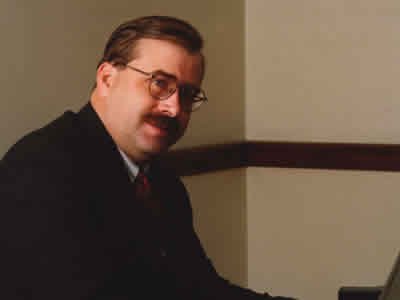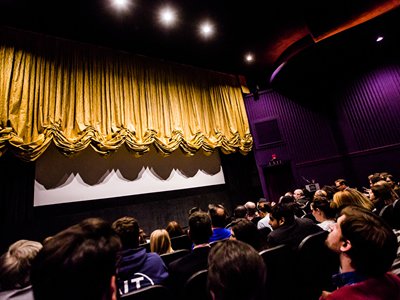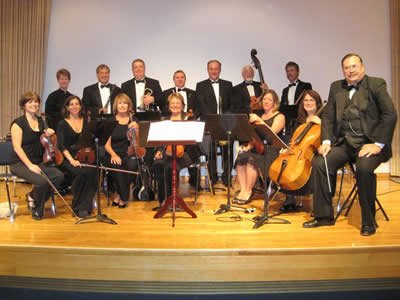Eastman Museum Pianist to Discuss Music, Film in Silent Era Feb. 7
Philip Carli will survey early 20th-century recordings by motion-picture musicians

Leave it to one of the world's top silent-film accompanists to create a cinematic experience.
That is what Philip Carli—an acclaimed musicologist, sound recording historian, film scholar, pianist and conductor in Rochester, New York—hopes to do on Wednesday, Feb. 7, when he presents "Sound of Silents" at 6:30 p.m. in the Peter Graham Scholarly Commons (114 Bird Library). Free and open to the public, the program will survey recordings of motion-picture musicians from the silent era (c. 1916-29).
For more information, contact Sarah Fuchs Sampson, assistant professor of music history and cultures in the College of Arts and Sciences (A&S), at 315.443.4321 or sefuchss@syr.edu.
Carli’s visit is supported by A&S, along with the Humanities Center and the Departments of Art and Music Histories and English; the Bandier Program in the Newhouse School; and the Setnor School of Music in the College of Visual and Performing Arts.
Fuchs Sampson, who works at the nexus of musical culture, performance and technological mediation in the 19th and 20th centuries, says Carli is one of today’s leading scholar-performers.
“He will show how silent-film musicians’ creative skills—or lack thereof—could make or break a film on a local level, both in the United States and Europe,” she says. “Movie-house managers and audiences alike expected pianists, organists and orchestras to shape and interpret silent films for them.”
So respected were these musicians that they often made commercial recordings, many of which are housed in the Diane and Arthur Belfer Audio Laboratory and Archive at Syracuse University Libraries. Says Fuchs Sampson, “The recordings Philip will discuss make clear that the silent era was anything but silent.”

Carli is virtually synonymous with the George Eastman Museum, one of the world’s oldest and largest repositories of sound recordings, moving images, photographs and related print materials. Since 1989, Carli has been in residence at the Rochester-based museum, lecturing on and accompanying hundreds of silent-film screenings.
The award-winning pianist also has enjoyed a long association with the University of Rochester, where he is an English instructor at the River Campus and has taught musicology at the Eastman School of Music, from which he earned a master’s degree and a Ph.D.
A fixture on the classic-film circuit, Carli is a regular at Italy’s Pordenone Silent Film Festival, one of the most important of its kind in the world. He also performs, conducts and lectures at colleges and universities, galleries, museums and historic theaters across the globe.
“I think of myself as an interlocutor,” Carli told the Rochester Review. “I’m there to assist the film in making its point, to strengthen the link between film and audience and, above all else, not to call attention to myself.”
Carli’s love affair with the medium began in Southern California, where, as a child, he soaked up early slapstick comedies and cowboy dramas. Carli eventually began checking out 16-millimeter movies from the library so he could play along with them. He created his first such score at age 13 to the 1923 Lon Chaney classic “The Hunchback of Notre Dame.”

Following undergraduate studies at Indiana University Bloomington, Carli relocated to Western New York, where he became a sought-after film performer, conductor, composer and scholar. He also founded the Flower City Society Orchestra, which, since its inception in 1993, has specialized in music from the Gilded Age.
In a recent interview with Rochester’s Democrat and Chronicle, Carli admitted that he does not always see a film before sitting down at the piano. “You have to know if [it] is an American or Scandinavian or Japanese film, who the director is and who ... the stars and the camera-man [are],” he said, comparing the process to studying a racing sheet. “Sometimes you play to the frame—if there’s just one figure in a room, you musically emphasize the vastness of space. My mind is like a computer ticking. I don’t think about what’s on the screen—I have to think ahead.”
Another challenge of accompanying film is the absence of breaks. Performers may find themselves playing continuously from a few minutes to more than two hours. “There is no other musical field where you have to have this much physical and mental endurance,” Carli added.
With more than 80 percent of silent films missing and their musical accompaniments mostly forgotten, Fuchs Sampson hopes Carli will shed light on this oft-misunderstood, yet viable art form.
“By the mid ’20s, cinema musicians were appreciated in a way that is hard to understand today,” she says, noting their ability to be "sensitive and responsive" to what was on the screen. “Just as musicians did a hundred years ago, Philip has built a career on using music to make movies accessible to new audiences. There’s more to these classics than meets the eye—and ear.”
Featured
Sarah Fuchs Assistant Professor and Director of Undergraduate Studies in Music History and Cultures
